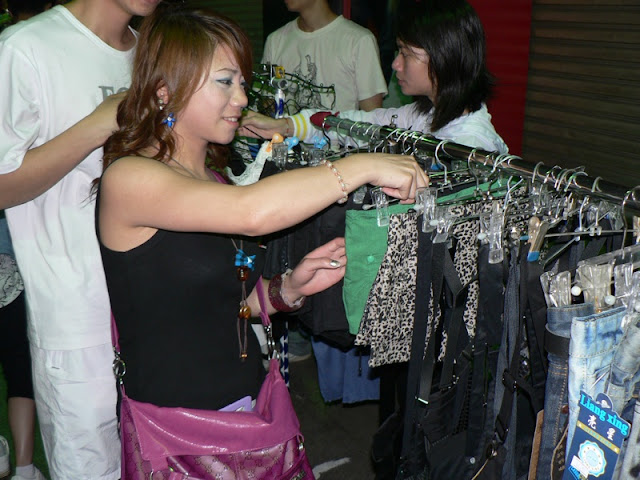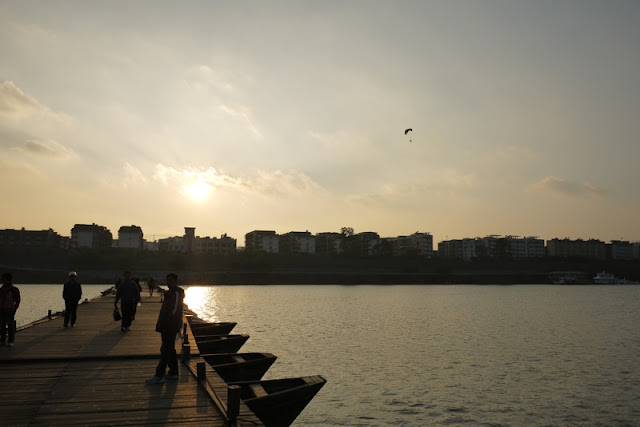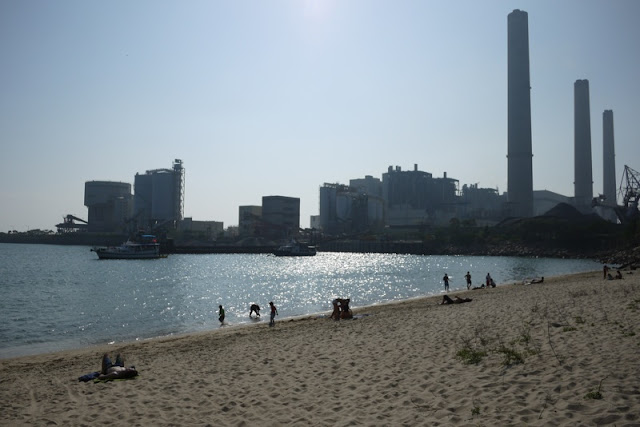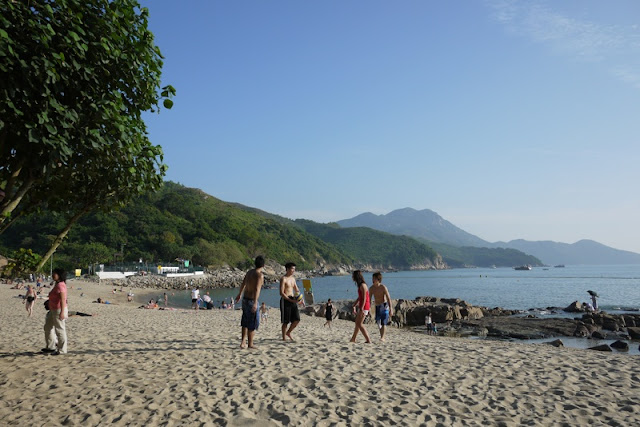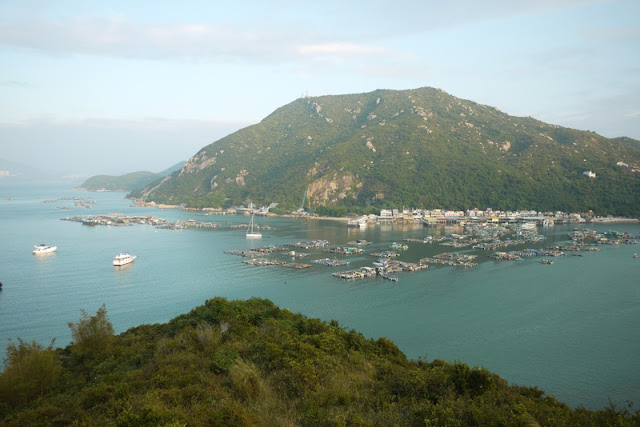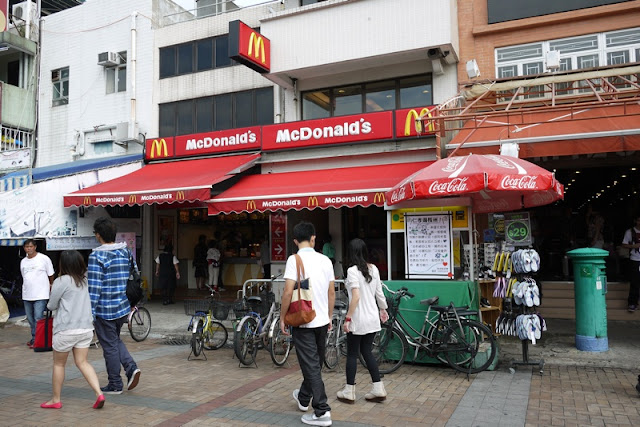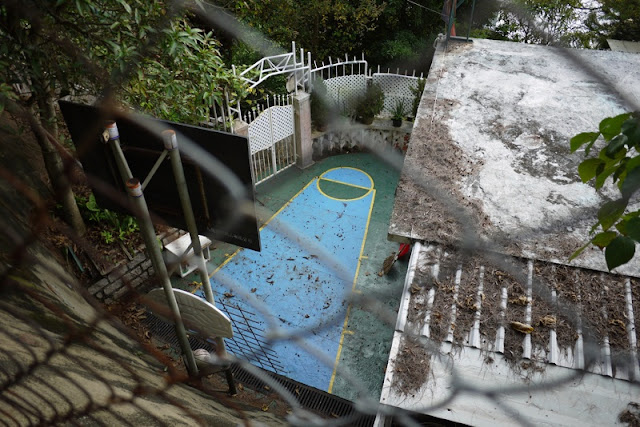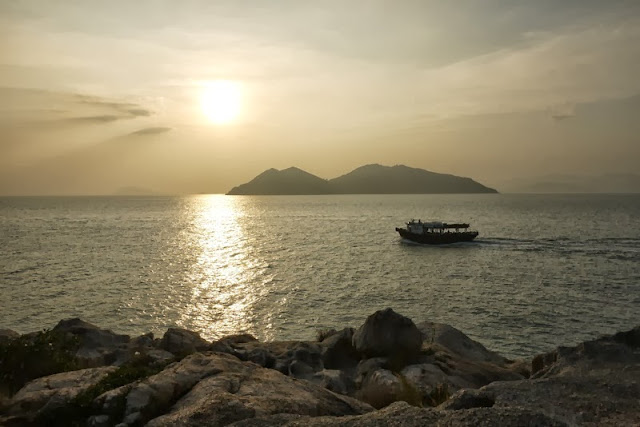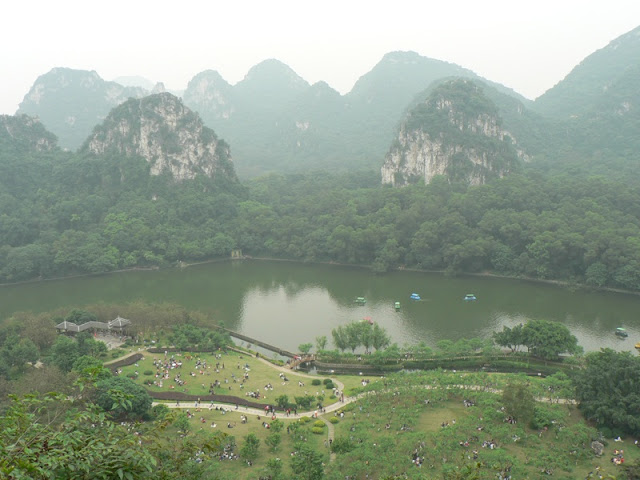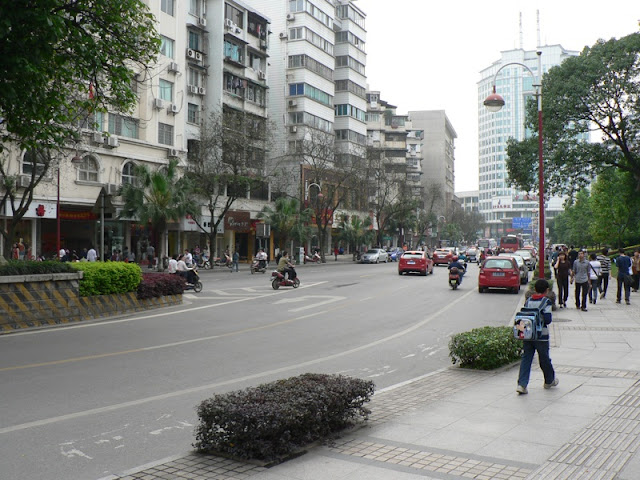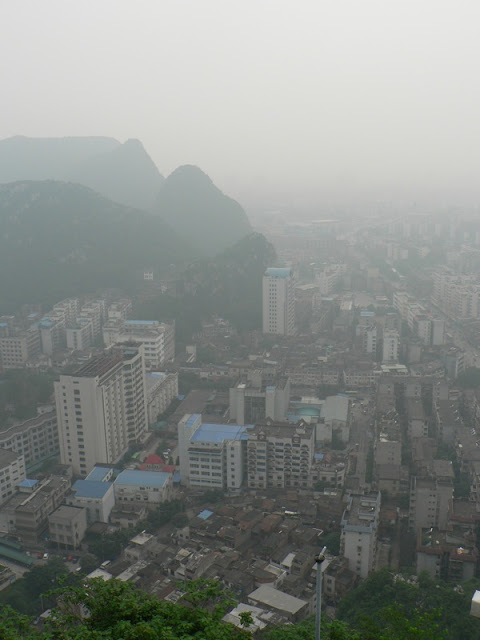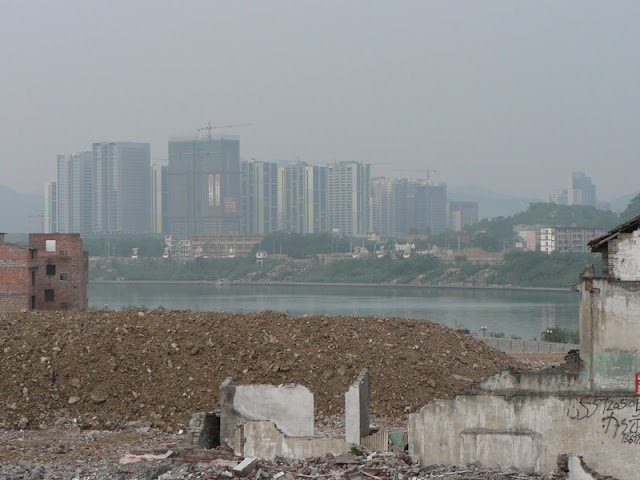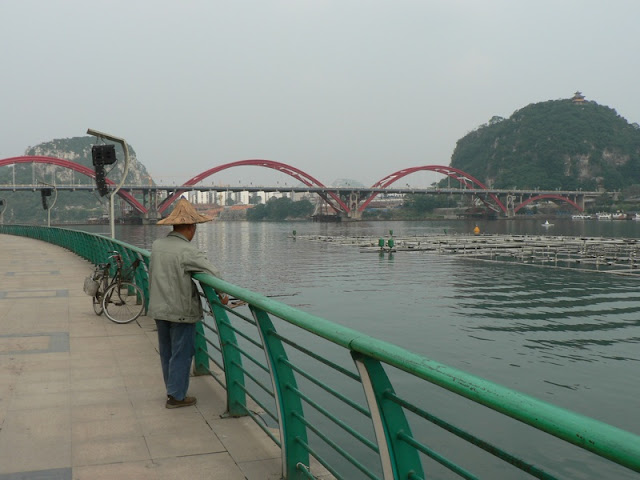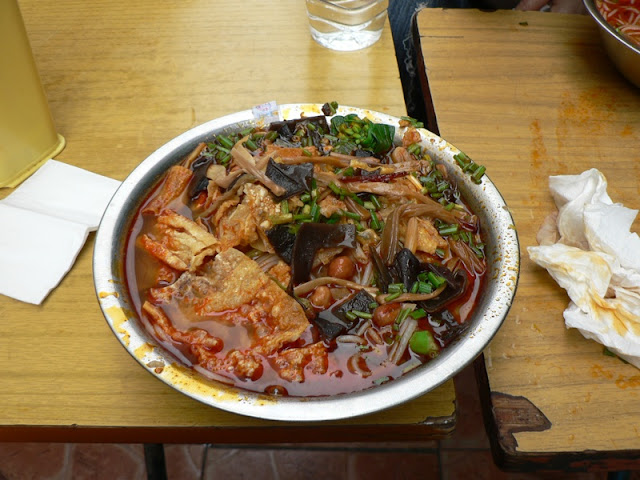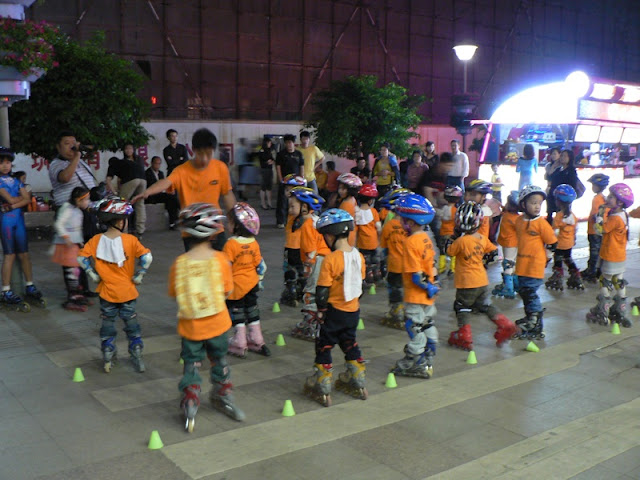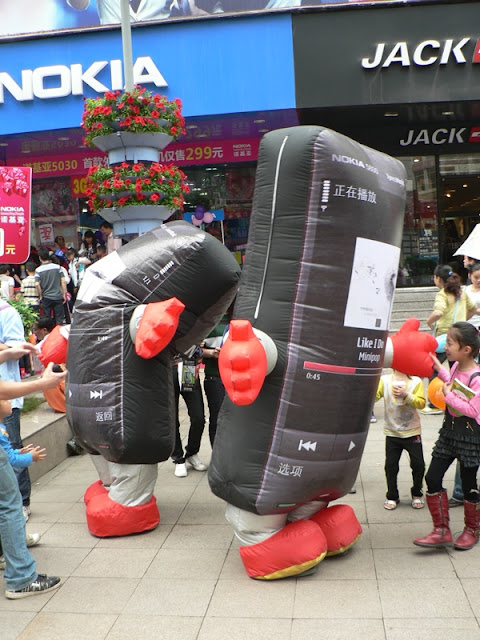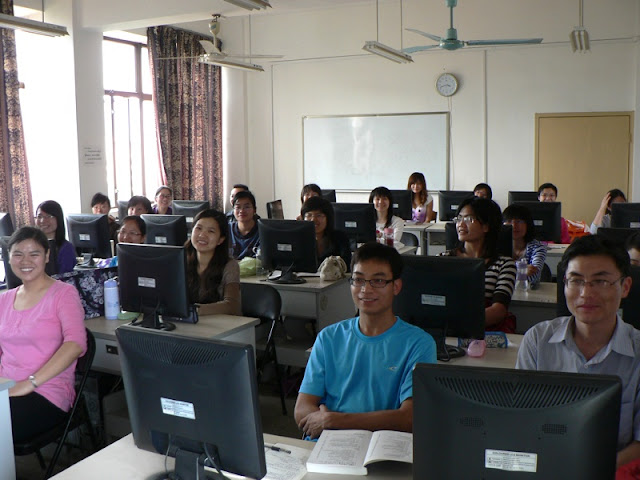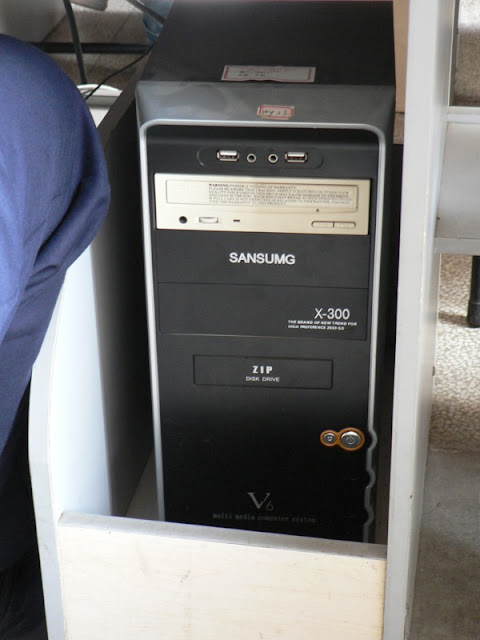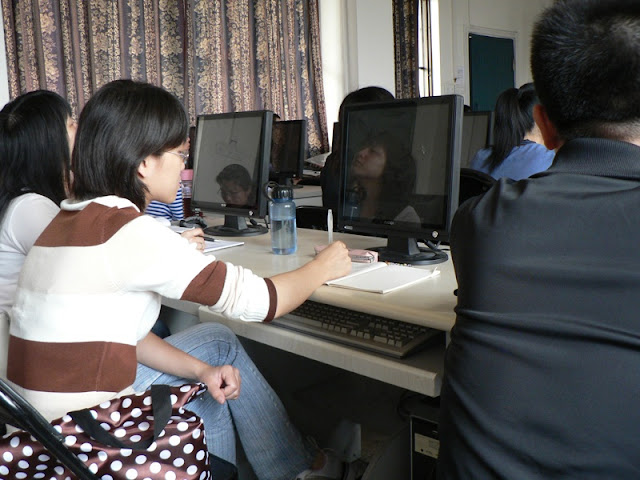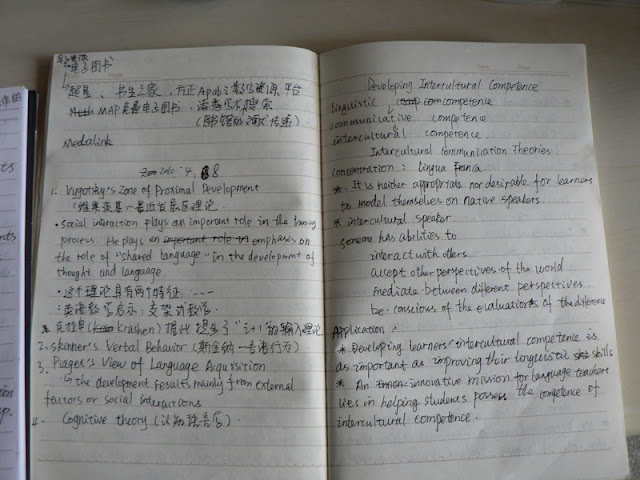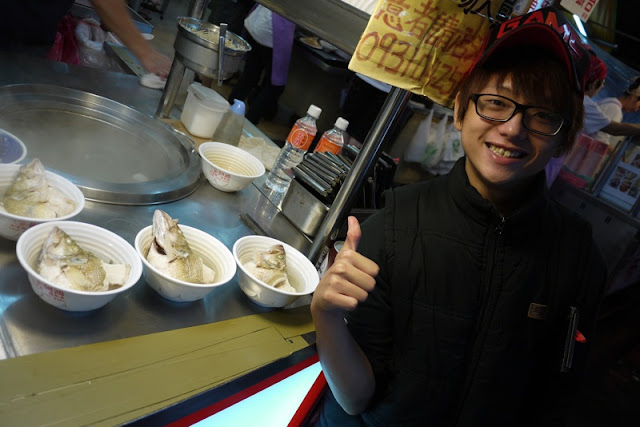In previous posts I wrote about how opportunistic and exploratory research conducted in a classroom in Nanning and a hair salon in Liuzhou opened up a variety of insights and questions that could help guide the design of technology. I'll now share another experience I had in Liuzhou last year that's very different from both of them. It may not include any photos focused on technology, but it could have just as much of an impact.
One evening, after leaving a store with a wide variety of Chinese designed and manufactured mobile phones I was deciding where to go next. While I stood in thought at a street corner this young couple approached me and asked if I needed directions:
Although I didn't need directions, I took advantage of the opportunity to ask them a few questions about the very inexpensive mobile phone I had just purchased and the conversation led to other topics as well. They then asked if I'd like to join them as they enjoyed a break from their college studies, and I happily accepted.
Later in the evening I accompanied the couple to a shopping area that looks like this during day:
While there are a number of stores along the street, in the evening the area transforms into another shopping experience -- a night market:
Given the crowds in the photo, it's hard to see that there are numerous racks with clothes for sale and additional items on display on the ground.
During their time at the night market the couple considered a variety of goods such as some bowls:
and shorts:
That night wasn't just an opportunity for me to observe what they did while shopping, but to also learn about their thoughts on numerous topics and about how they expressed themselves. For example, the young lady was particularly colorful, whether it was her desire to pose for photographs in various locations:
her abilities in opening beer bottles with her teeth:
or her favorite expressions such as the frequent, "That's so Lady Gaga!"
This is just a small taste of what I saw and learned that night and serves as a lead into several upcoming posts about some other shopping environments in China. I'll touch on a variety of related topics such as how computers are used in small retail businesses and how such environments may provide insights for designing better online shopping experiences. Those posts will shed some some light on how what I learned in Liuzhou could be of value to designing new technology.
For now, I'll just say that the opportunity to talk with the college couple in Liuzhou and observe a small part of their lives was yet another invaluable experience. The opportunistic nature of it added the benefit that I could be sure that factors such as their style of dress weren't a reflection of preparing for me in any way. And based on what they told me, it may have been very unlikely I would have come across them through a typical recruiter for a research study.
So, I'm very glad I took the time to pause on that street corner.
One evening, after leaving a store with a wide variety of Chinese designed and manufactured mobile phones I was deciding where to go next. While I stood in thought at a street corner this young couple approached me and asked if I needed directions:
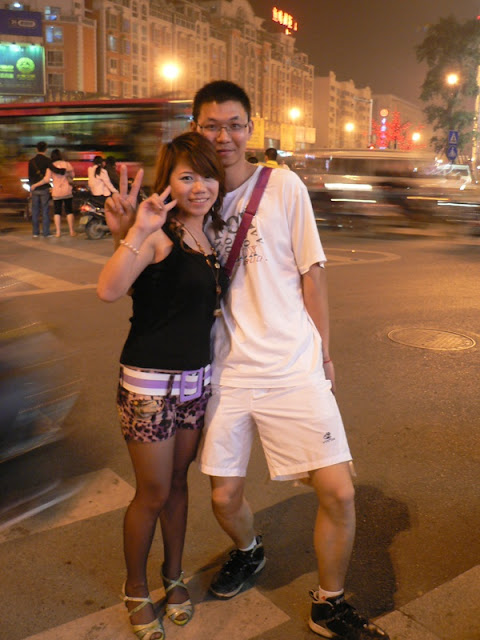 |
| Two friendly college students in Liuzhou, Guangxi |
Although I didn't need directions, I took advantage of the opportunity to ask them a few questions about the very inexpensive mobile phone I had just purchased and the conversation led to other topics as well. They then asked if I'd like to join them as they enjoyed a break from their college studies, and I happily accepted.
Later in the evening I accompanied the couple to a shopping area that looks like this during day:
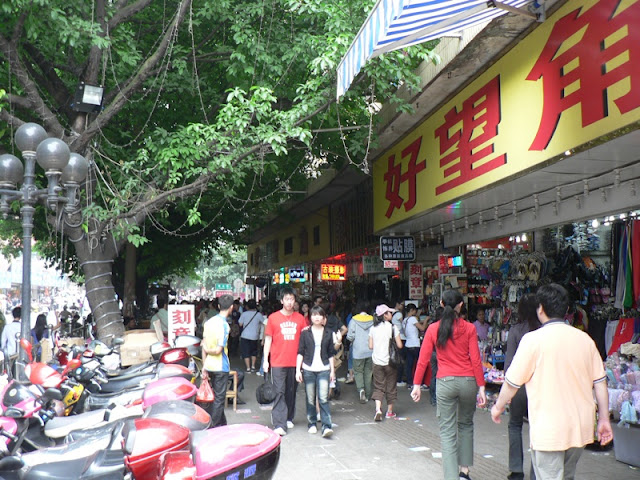 |
| Sidewalk during the day |
While there are a number of stores along the street, in the evening the area transforms into another shopping experience -- a night market:
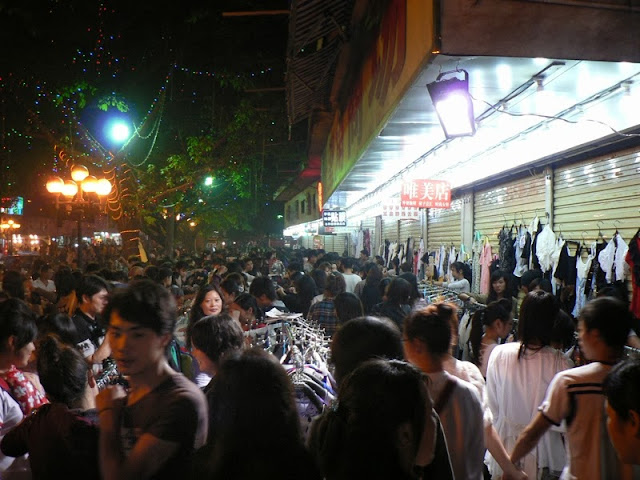 |
| Sidewalk during the night |
Given the crowds in the photo, it's hard to see that there are numerous racks with clothes for sale and additional items on display on the ground.
During their time at the night market the couple considered a variety of goods such as some bowls:
and shorts:
That night wasn't just an opportunity for me to observe what they did while shopping, but to also learn about their thoughts on numerous topics and about how they expressed themselves. For example, the young lady was particularly colorful, whether it was her desire to pose for photographs in various locations:
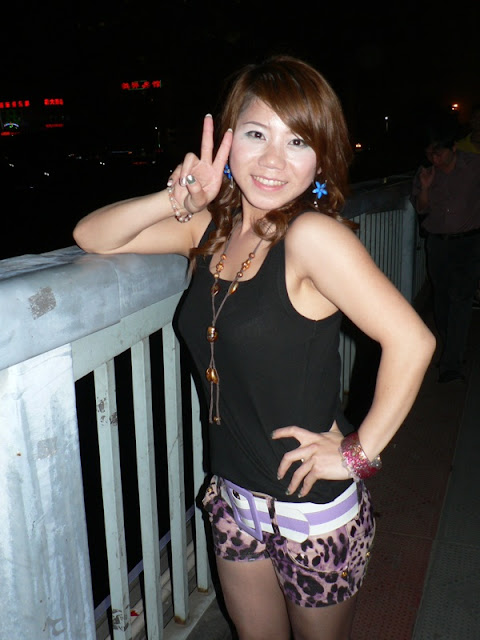 |
| Posing on a bridge over the Liu River |
her abilities in opening beer bottles with her teeth:
 |
| Opening a bottle of beer during dinner |
or her favorite expressions such as the frequent, "That's so Lady Gaga!"
This is just a small taste of what I saw and learned that night and serves as a lead into several upcoming posts about some other shopping environments in China. I'll touch on a variety of related topics such as how computers are used in small retail businesses and how such environments may provide insights for designing better online shopping experiences. Those posts will shed some some light on how what I learned in Liuzhou could be of value to designing new technology.
For now, I'll just say that the opportunity to talk with the college couple in Liuzhou and observe a small part of their lives was yet another invaluable experience. The opportunistic nature of it added the benefit that I could be sure that factors such as their style of dress weren't a reflection of preparing for me in any way. And based on what they told me, it may have been very unlikely I would have come across them through a typical recruiter for a research study.
So, I'm very glad I took the time to pause on that street corner.


